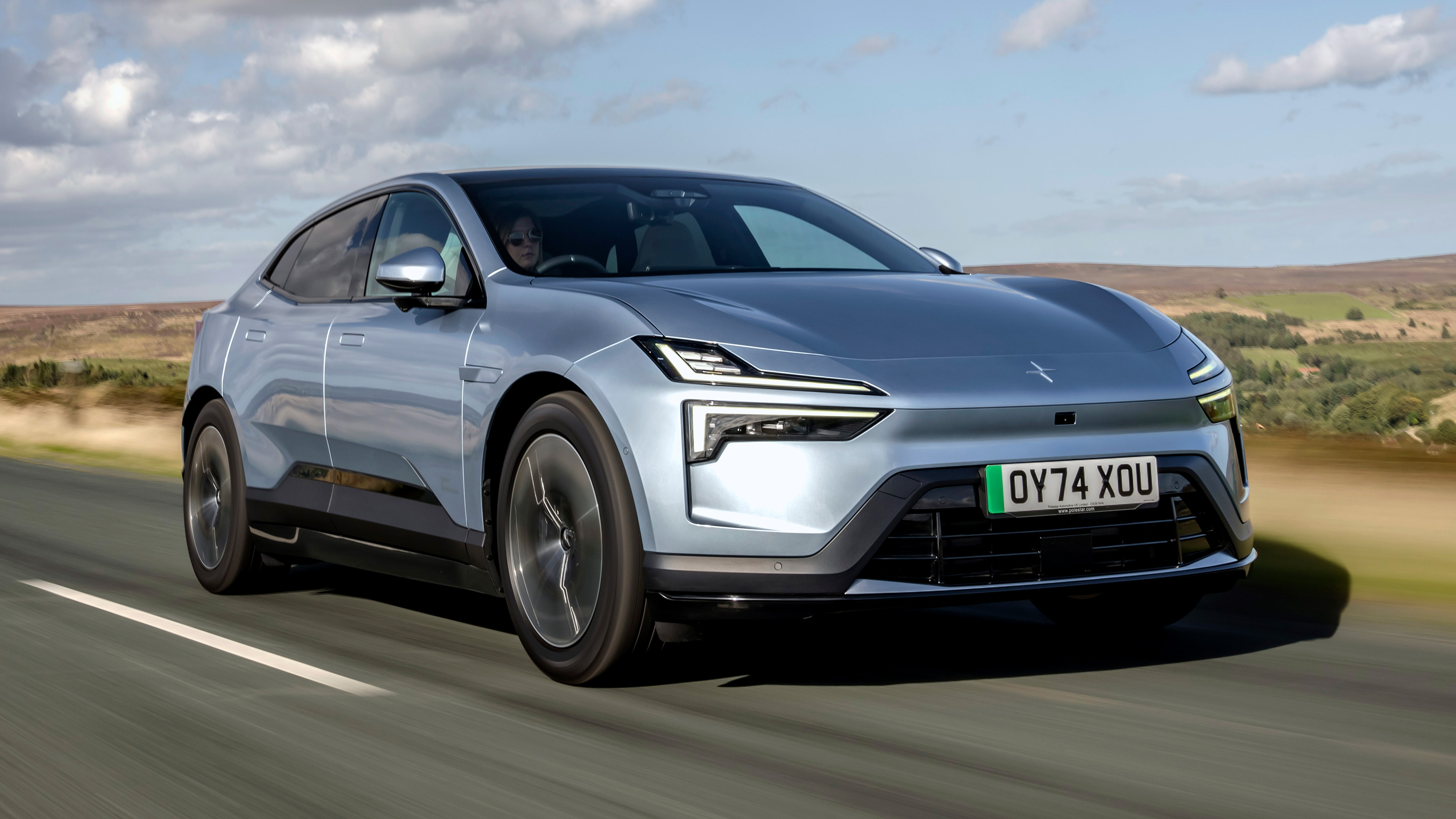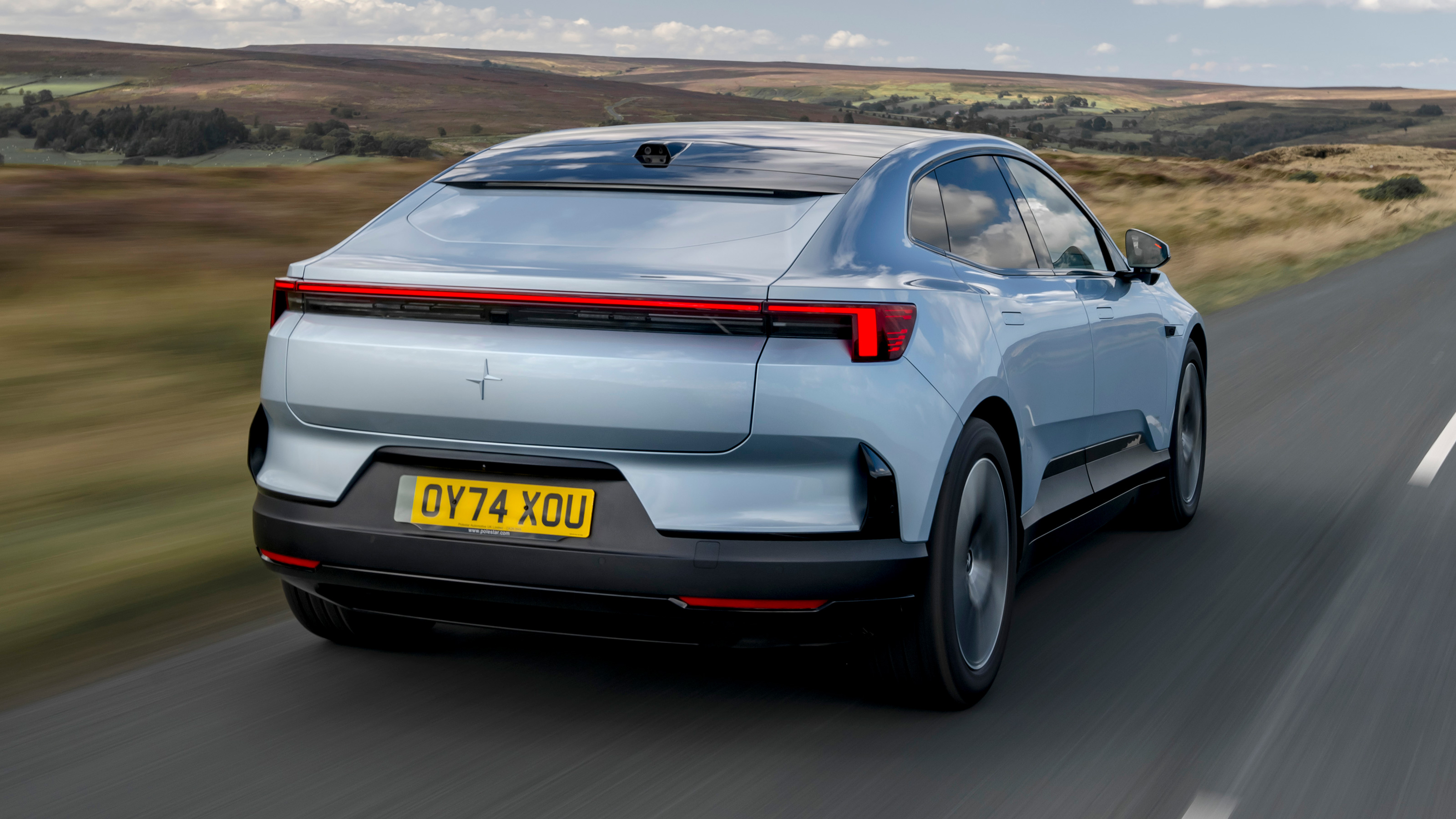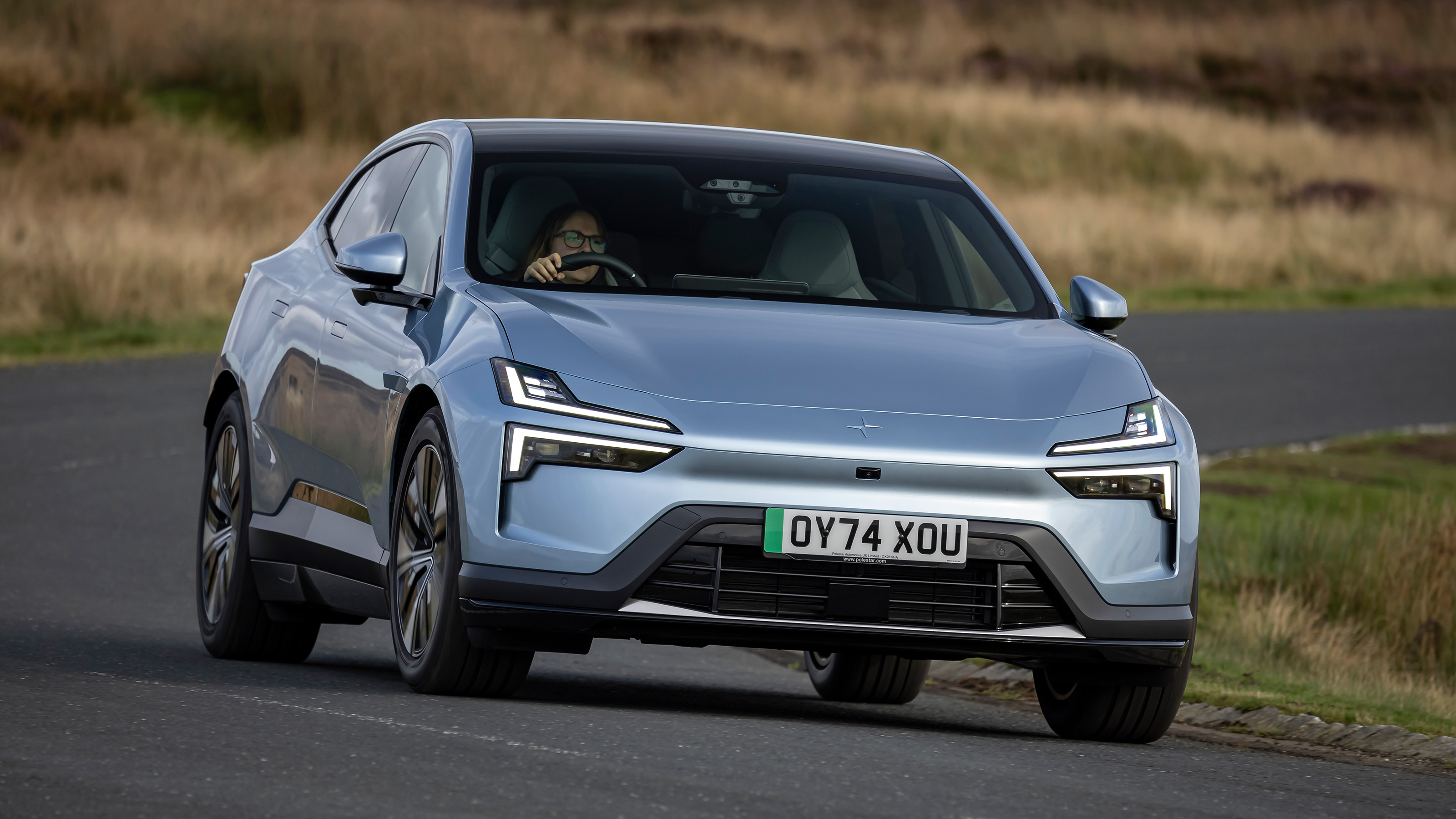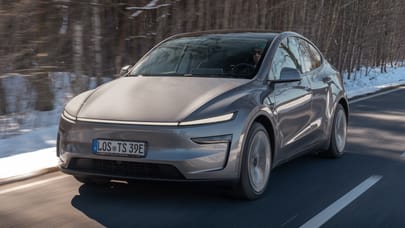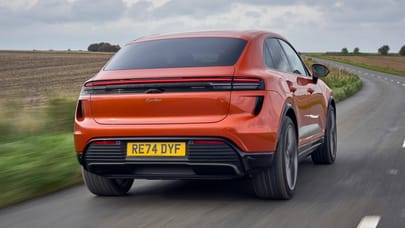
Good stuff
Typically stylish Polestar interior, good to drive, styling definitely a talking point, very useable range
Bad stuff
Not one for dog owners, problematic shortage of physical buttons
Overview
What is it?
A five-seat, Swedish-inspired pure-electric car. It’s a mid-sized ‘SUV Coupe’ with a heavy lean towards the more sporting end of things. Actually not that SUV-ish; they're probably just using the term because it's fashionable. Its design has one definite talking point. Which, yes, we'll be talking about.
To get an idea of its size and height, it sits between the Tesla Model 3 and Model Y. It's more lux than them though. The 4 also spookily reminds us of the Jaguar I-Pace, a car that's about to die. But that doesn't mean the 4 is an obsolete idea. The Porsche Macan electric is pretty close. Or, as a PHEV, the Mercedes GLC Coupe. But the 4's long wheelbase gives loads of stretching room even though height is low.
What’s going on at the back of the car?!
You have immediately noticed that the Polestar 4 comes without a rear windscreen. And no, that’s not a filled-in rear; the 4 was always designed to have no back glass. The aim is to improve rear headroom and rear passenger comfort and improve aero. A big glass roof makes things feel light throughout the car. Polestar says you can drop the rear divider to ‘accommodate long items or dogs’, but it’s not the best solution. Your dog will hate you and life will therefore be awful.
So why no rear screen? With the narrow fastback tail, it would have been small so a rear-view mirror's angle would have been a tiny letterbox. So it has instead a wider-angle camera sending an image to a screen where the mirror would be. "You'll get used to it" says Polestar. We didn't. You can't just glance at it, because the image is just inches from your eyes, so you have to refocus and swivel your eyes together. Whereas in a real mirror, the image is at the same focus and binocular distance as the road ahead. So like a van driver you rely more on the door mirrors.
A big, standard glass roof stretches back way past the rear passenger’s heads, so the rear never feels dark, and the driver maintains rear vision via a high-def camera on the roof linked to a similarly high-def rear-view mirror.
Styling-wise it looks very Polestar, with that clean, reserved look that works so well.
And is it actually fun to drive?
It's quick and smooth and steers nicely. For the dual motor, insert the words 'very' and 'very' before the word 'quick'. That version which clocks the 0-62mph time in under four seconds and has adaptive suspension.
There’s a more sedate single-motor, rear-wheel drive version if you don’t feel the need, and that manages the benchmark in just over seven seconds. Plenty fast enough for normal duties.
The standard 94kWh battery should easily take you beyond 300 miles real-world.
The cheaper one has passive suspension and on British B-roads it doesn't feel quite right. The ride is turbulent: the stiffish springs mean it's bounced up and down and the dampers don't manage to contain it. The twin-motor one, running on its adaptive dampers, is very different. Much more controlled, and actually both more fun and more comfortable.
Spec the £4,000 Performance Pack and you get specially tuned dampers, Brembo brakes, 22in alloys wrapped in Pirelli P Zero tyres and Swedish gold splashed everywhere - brake calipers, valve caps and seatbelts. This is Polestar channeling its former self; the one that gave Volvos a slightly boutique-slash-skunkworks overhaul.
If Polestar is Volvo’s funky cousin, which Volvo is this based on?
Well, that’s not as easy a question to answer. Thus far, Polestars have been based on Volvo’s architectures: under the skin the Polestar 2 is closely related to the EX40 and the Polestar 3 to the EX90. The 4 uses neither of those platforms, but instead the SEA1 platform from Geely. So that’s cars like the Volvo EM90 large luxury minivan which we don’t get in Europe, the Zeekr 001 and 009 and the Ji Yue 01.
But that’s not to say it doesn’t have all the usual Polestar vibes; the interior is smart and calm, there’s a large quantity of recycled and repurposed bits and there’s a sense that it’s not quite as macho as some other brands.
But this platform thing does have one strange effect. The screen and control system on the 4 looks rather like the ones on the 2 and 3, but operates very differently from either. And actually, we prefer it.
Meanwhile Polestar has a British engineering arm that's busy developing an aluminium platform for its forthcoming Polestar 5 saloon and 6 convertible.
While it reeks of Swedish modernism, the 4 demonstrates the industrial politics of the modern global car biz. Polestar is Chinese-owned but has Swedish HQ. The car was mostly developed in Sweden on a Chinese platform. The 4 is currently built in China but with the possibility of transferring to South Korea in the unlikely event tariffs bite in the UK.
Our choice from the range

What's the verdict?
The Polestar 4 is fun and interesting, and has a distinctive design. But that distinctiveness does have one perverse aspect. The lack of rear-view to gain a bit of rear headroom and marginal aero gains on what is a 2.3-tonne, high-riding SUV isn’t really worth it. Yes, you might eventually get used to the digital mirror; van and lorry drivers have used them for a while. But they're dealing with an issue, rather than creating a solution to an invented one.
The interior is lovely, and very roomy. The overall vibe is relaxed, provided you're not frustrated by elements of the interface. The single-motor version is relaxing to drive too, but you do get a better car for paying extra for the faster version – which is actually quite unusual in the world of EVs.
The Rivals
Trending this week
- Car Review
BMW iX3




